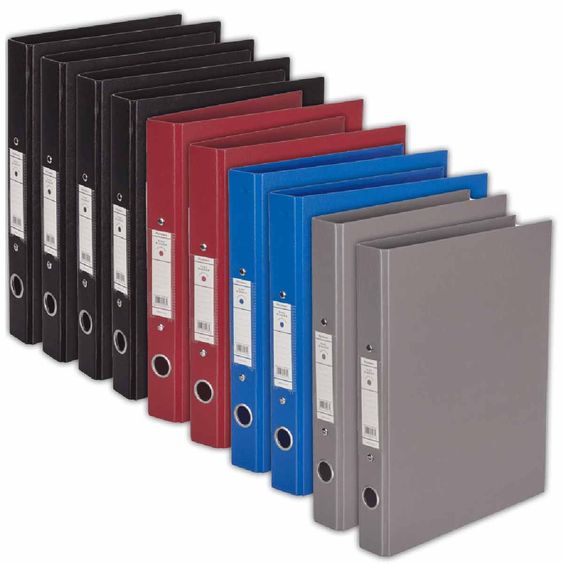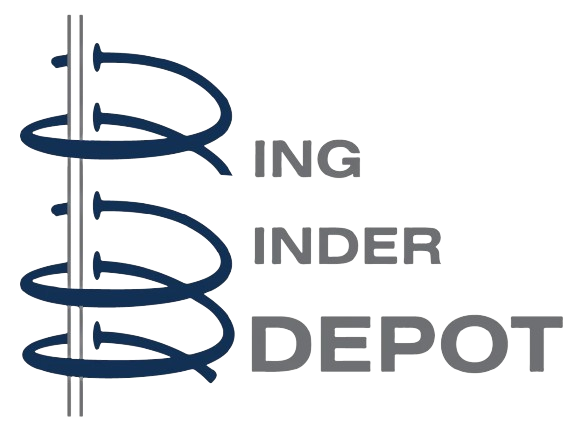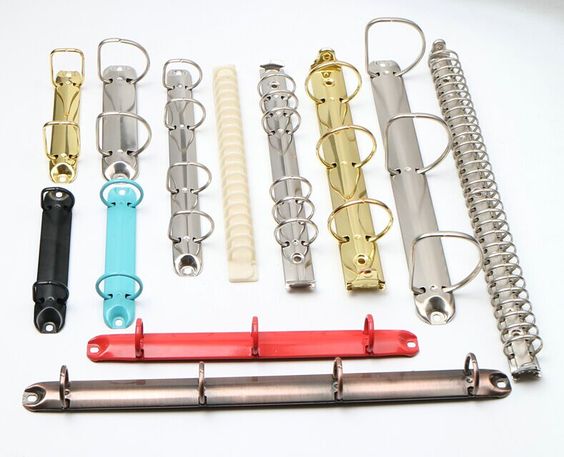
Portrait vs. Landscape Ring Binders: Which Is Right for You?
Ring binders are indispensable for organizing documents, but the choice between portrait and landscape orientation can significantly impact functionality and presentation. In this article, we'll explore the differences between portrait and landscape ring binders and help you determine which one best suits your needs.
Portrait Ring Binders
1. Traditional Look: Portrait binders, with their vertical orientation, provide a classic and professional appearance, making them a popular choice for presentations, reports, and business documents.
2. Easy Page Turning: Vertical pages are easier to flip through, making portrait binders ideal for documents that require frequent reference or reading.
3. Compatible with Standard Paper: Portrait binders are designed to hold standard letter-size (8.5" x 11") paper, making them suitable for most office and academic applications.
4. Versatility: While commonly used for text-heavy materials, portrait binders can also accommodate images, graphs, and charts if organized creatively.
Landscape Ring Binders
1. Unique Presentation: Landscape binders, with their horizontal orientation, offer a distinctive and visually appealing way to display content. They're perfect for artwork, photography portfolios, and spreadsheets.
2. Ideal for Wide Content: Landscape binders are well-suited for materials that are wider than they are tall, such as panoramic photos, architectural drawings, and large tables.
3. Creative Design: The horizontal format encourages innovative layouts and creative design, making landscape binders a favorite among artists and designers.
4. Spacious Spine: The wider spine allows for more extensive customization, including larger labels and graphics.
Choosing the Right Binder
To determine whether a portrait or landscape ring binder is right for you, consider the following:
-
Content: Think about the type of materials you'll be storing. Are they predominantly vertical or horizontal? Choose the orientation that complements your content.
-
Functionality: Consider how often you'll need to reference or present your documents. Portrait binders are more practical for reading, while landscape binders are better for showcasing wide or artistic content.
-
Aesthetic Appeal: Reflect on the visual impact you want to create. Portrait binders exude a classic, professional look, while landscape binders offer a unique and artistic flair.
-
Size: Ensure the binder's size matches the documents you intend to store. Portrait binders are typically designed for standard paper, while landscape binders cater to wider formats.
-
Customization: Think about how you'd like to personalize your binder. Both orientations offer ample space for customization, so choose the one that aligns with your design preferences.
In conclusion, the choice between portrait and landscape ring binders ultimately depends on your specific needs and the type of content you wish to organize or present. Whether you prioritize functionality, aesthetics, or a unique visual impact, there's a binder orientation that's perfect for you. Explore our range of portrait and landscape binders to find the ideal fit for your requirements.
For more read click>>>The Importance of Heavy-Duty Ring Binders for Businesses
FAQ: Portrait vs. Landscape Ring Binders
1. What are portrait and landscape ring binders?
Portrait ring binders have a vertical orientation, while landscape binders have a horizontal orientation. They differ in appearance, functionality, and suitability for various types of content.
2. What are the main features of portrait ring binders?
Portrait binders offer a traditional look, easy page turning, compatibility with standard paper sizes, and versatility in accommodating text-heavy or image-based materials.
3. What are the main features of landscape ring binders?
Landscape binders provide a unique presentation style, ideal for wide content such as artwork, photography, and spreadsheets. They encourage creative design and offer a spacious spine for customization.
4. How do I choose between portrait and landscape ring binders?
Consider factors such as the type of content you'll be storing, the frequency of reference or presentation, the aesthetic appeal you want to achieve, the size of your documents, and your preferences for customization.
5. Which binder orientation is better for text-heavy materials?
Portrait binders are more practical for text-heavy materials due to their vertical orientation, which facilitates easy reading and reference.


